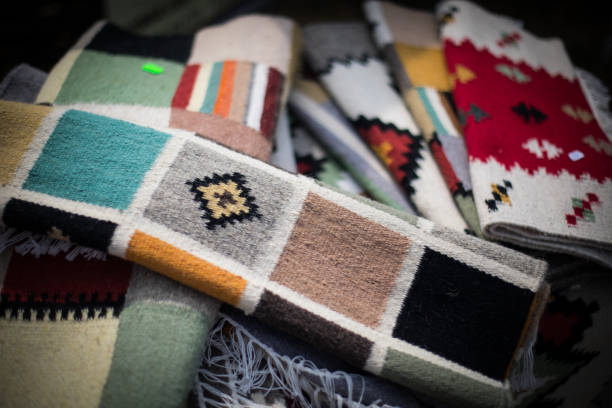Braided rugs Offer traditional style and historical origins
You should consider braided rugs if you want a carpet that is durable and attractive with a unique history.
In the early days of America, frugal settlers who learned this method from Native Americans began to use rags cut from old clothing. The style has since been modernized to suit more contemporary interiors.
You can still enjoy the history and beauty of braided rugs today, but in modern colors, styles, and shapes to suit any decor.
The best way to choose the braided rugs for you is to learn about their construction and materials. There are many different styles of braided rugs.
- Cloth braid
- Banded braid
- Flat braid
- Yarn braid
The most traditional rug style is a cloth-braided rug. These rugs were created in colonial times when clothing could only be used as rags. The settlers, who were very resourceful, would cut the old clothes into strips that they could braid. Then, with the braids they had in hand, they would coil and stitch these into oval shapes for use as floor coverings. Like old, worn-out clothing, these rugs are soft and have a variety of colors.
The traditional rug has broad braided bands that make it thick. Although an oval shape is the most common, braided rugs can be coiled in any desired shape. The rug’s shape, texture, and appearance were also affected by the different materials.
Types of Fabrics and Construction
There are many materials available today. Rug makers have been able to produce braided rugs of various colors, textures, and sizes by using different materials and construction methods.
The flat braid is another type. Another common braid is the yarn braid.
Flat Braid
Flat braids are the thinnest and have less bulk than coil braids. The braid is not coiled, but instead, pieces are added to the center braid to keep it light from end to center.
Yarn Braid
A yarn braid is the middle option for thickness and density. The thick yarn is worked in a continuous loop using hooks, similar to crochet. This material type allows for the most variety in pattern and style. The designer can change the colors, patterns, and materials, just like a sweater or crochet blanket, to achieve the desired look.
These techniques allow manufacturers to produce braided rugs of all shapes and sizes, including squares, circles, and rectangles.
Popular Materials
Today, instead of using old clothing scraps, many materials are used to create the perfect look. Braided rugs can now be made in larger sizes to fit into any room. Jute, chindi, and felt are some of the most popular materials used in modern times.
Jute
Jute is an absorbent, natural fiber. It is best used in low-traffic areas like under tables, covered patios, or seating areas. This rug gives you a classic and natural look.
Chindi
Chindi is a multi-purpose rug made from recycled cotton. It has a durable appearance and feel. These rugs, which are usually the least expensive, are also suitable for hallway runners, bathrooms, and kitchens.
Natural fibers like jute or chindi are absorbent and work best in areas that are dry and indoors.
Felt
The colors and sizes of braided felt rugs are varied. This rug is perfect for bedrooms, playrooms, or any other area where a thick, soft carpet with extra cushioning is desired or needed.
Padding A Braided Rug
The pattern is repeated on the reverse side of most braided rugs. They are durable and thick. If you have wood or tiled floors, it is advisable to use a Rug Pad. This will prevent slipping and add comfort under thinner rugs.
Summary
Whatever material or style of braid you choose, it will give you a classic, durable look that can be adapted to any space.
We have a wide variety of braided rugs at rugs.com in many colors, styles, types of braids, and fibers. These rugs will add the perfect accent to any decor. You’ll have a better idea of what you want to buy now that you know some tips.

